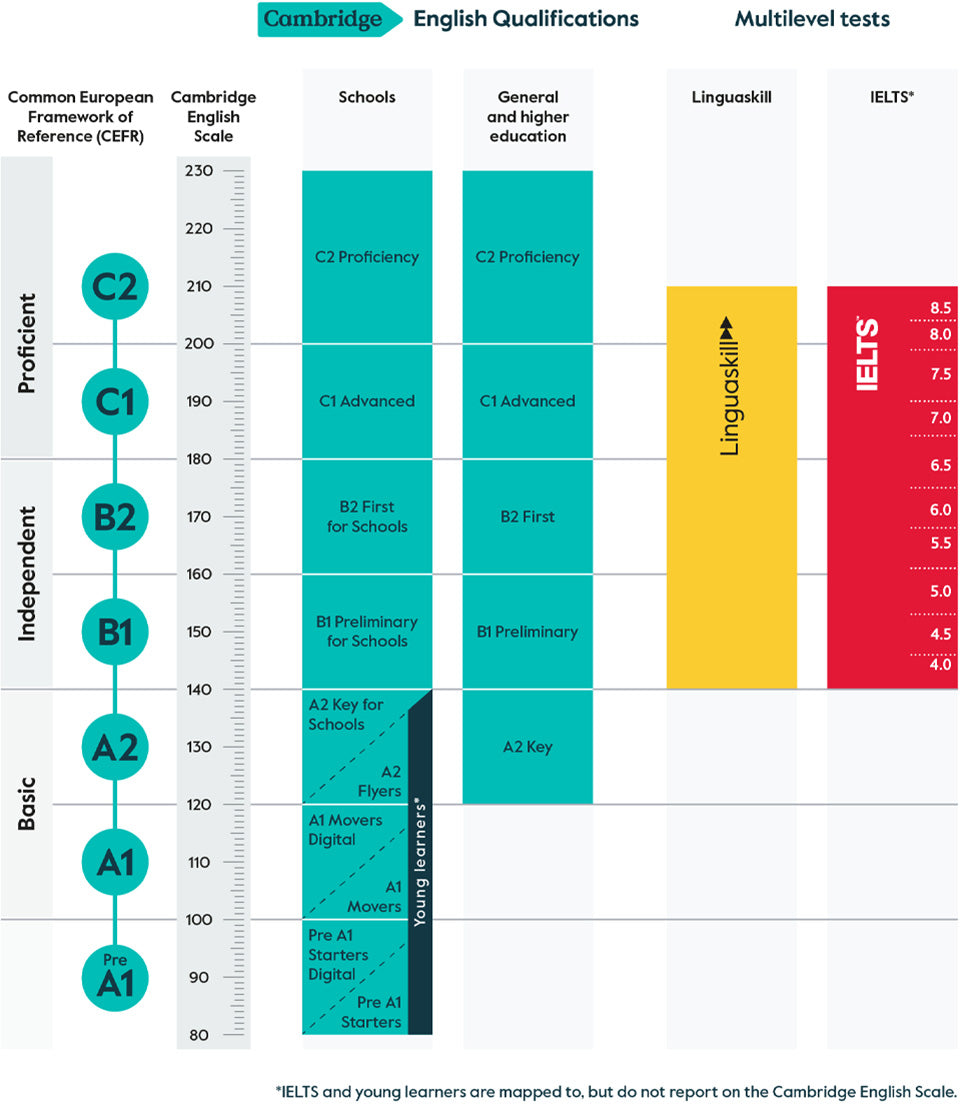
Understanding CEFR Levels, Our Levels (and How They Relate to IELTS) – From Pre-A1 to C2
شارك
If you’ve ever browsed through English courses or exam prep materials, you’ve probably seen mysterious codes like A1, B2, or C1.
They’re part of the Common European Framework of Reference for Languages (CEFR) — an international standard that describes how well someone can use a language.
The problem? CEFR descriptions often sound like they were written by a committee in Brussels. And unless you’re a language teacher, it can be hard to picture what a “B1” student can actually do in real life.
So, let’s strip away the jargon and look at each level — starting from the very bottom — and I’ll give you a rough idea of the equivalent IELTS band score too.
Pre-A1 – Total Beginner -Our level: TB
-
What they can do: Recognise a few words and very simple phrases, especially if supported by pictures, gestures, or context. They can probably say “hello” and “thank you” but not much more without help.
-
Real-world example: They can point to a menu item and say, “This, please,” but can’t understand the waiter’s follow-up question.
-
Approx. IELTS: Below 2.0
A1 – Beginner - Our level: Starter
-
What they can do: Handle basic introductions, give personal details, and ask simple questions about familiar topics. Listening is slow-going — they understand only if people speak clearly and slowly.
-
Real-world example: Booking a hotel room in person, but probably resorting to hand gestures if the receptionist talks too fast.
-
Approx. IELTS: 2.0–3.5
A2 – Elementary - Our level: 1
-
What they can do: Manage simple, routine tasks. They can talk about daily life, describe surroundings, and handle short social exchanges — as long as the other person is patient.
-
Real-world example: Asking for directions and (mostly) understanding the reply, though they may need it repeated.
-
Approx. IELTS: 3.5–4.5
B1 – Intermediate - Our level: 2 & 3
-
What they can do: Cope with travel situations, express opinions on familiar topics, and write basic connected text. Their language still has errors, but they can usually make themselves understood.
-
Real-world example: Explaining to a mechanic what’s wrong with their car — and understanding most of the explanation, too.
-
Approx. IELTS: 4.5–5.5
B2 – Upper Intermediate - Our level 4
-
What they can do: Interact with native speakers without much strain on either side. They can discuss abstract topics, understand the main ideas of complex texts, and write clearly on a wide range of subjects.
-
Real-world example: Participating in a work meeting, presenting ideas, and answering follow-up questions with confidence.
-
Approx. IELTS: 5.5–6.5
C1 – Advanced - Our level: 5
-
What they can do: Understand demanding texts and recognise implicit meaning. They can express themselves fluently and spontaneously without much searching for words. Mistakes are rare and often self-corrected.
-
Real-world example: Giving a persuasive speech, handling challenging Q&A sessions, and reading academic articles without a dictionary.
-
Approx. IELTS: 6.5–8.0
C2 – Proficient / Near-Native
-
What they can do: Understand virtually everything heard or read with ease. Can summarise information from different spoken and written sources, reconstructing arguments in a coherent presentation.
-
Real-world example: Watching a comedy show in the target language and getting all the jokes — even the cultural references.
-
Approx. IELTS: 8.0–9.0

If you're interested in doing a self assessment you can do that HERE.
But if you want a more accurate assessment, please take a placement test either on our app (Android and IOS) or in person at one of our centers (Send us a Whatsapp to book)
